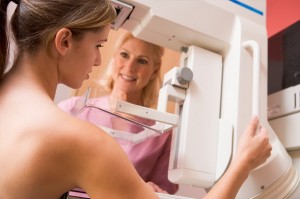The following question is answered by Charleston breast surgeon, Dr. James E. Craigie. of The Center for Natural Breast Reconstruction:
Q: I have had bilateral mastectomies without radiation. Cancer was in the left breast and I have been cancer-free for over a year.
I may be interested in DIEP reconstructive surgery. However, I am having trouble finding a surgeon to perform a buried flap utilizing expanders and my current mastectomy scars.
It is bad enough to have to have a large ugly scar across my abdomen, but to have my breast look like patches with two scars each is even more horrible than having cancer! It is even more disfiguring than the mastectomy and is not doing any woman a favor by making their self confidence and self image even worse. Are buried DIEP flaps one of the procedures that you perform?
A: Thank you for your question. I am sorry you are having difficulty finding a surgeon to address your situation. Every person’s situation is unique and if I had more info I could be more specific to you. However, I think I can help clarify why you are having a difficulties finding a surgeon to address your concerns:
During a mastectomy surgery, it is the breast surgeon removing the breast who has a major impact on subsequent reconstruction options. If no reconstruction was performed at the same time, then the surgeon was obligated to remove excess breast skin in order for the mastectomy incisions to heal without complications. It is important to understand the breast shape is determined by the breast skin that surrounds the new DIEP breast. If surgery removed the skin, then it has got to be replaced in some way.
In your question you spoke of tissue expansion. This technique does not create new skin but stretches the remaining skin. It also stretches the chest muscle and the muscle does not recover. Also, it’s important to note that some people will reject the tissue expander and have problems expanding the breast scar. In my opinion the technique of expanding the skin and later rebuilding the breast with a DIEP works best when the surgeons work together and extra skin is saved by the breast surgeon. Please try not to be discouraged! We have helped many women in your type of situation regain their self-confidence and their body image after mastectomy.
Also, please understand that in order to undergo the procedure you mentioned would require another surgery when the expanders are placed and the skin and muscle stretched over six months or sometimes less. When the stretching was completed then the DIEP procedure would be done but would require another two surgeries. It is unknown whether your body would stretch well and the process could be more complicated.
Most of our patients want to have reconstruction with their own tissue and do not want to sacrifice any important muscles. Our goal is to restore our patients’ self esteem and not simply scar their bodies and put them together with “patches.” Please let me know if you would like any more specific information we may need to touch base with you by phone.
James E. Craigie, M.D.
Center for Natural Breast Reconstruction
Do you have a question about breast implants or natural breast reconstruction? Ask the doctor by submitting your questions here.















